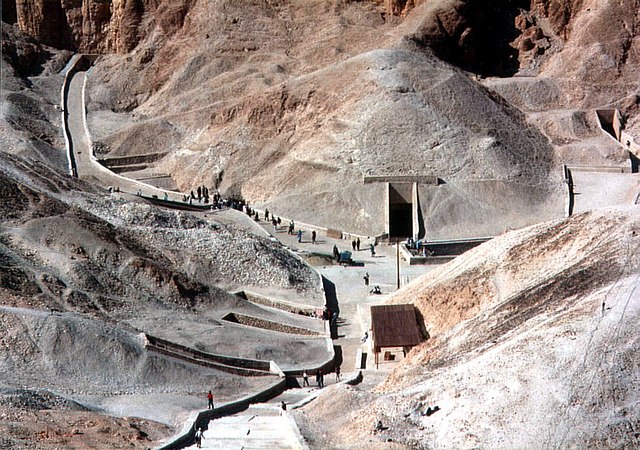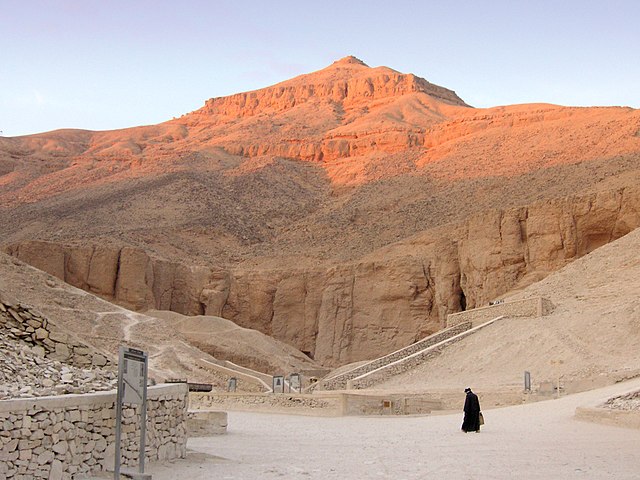KV55 is a tomb in the Valley of the Kings in Egypt. It was discovered by Edward R. Ayrton in 1907 while he was working in the Valley for Theodore M. Davis. It has long been speculated, as well as much disputed, that the body found in this tomb was that of the famous king, Akhenaten, who moved the capital to Akhetaten. The results of genetic and other scientific tests published in February 2010 have confirmed that the person buried there was both the son of Amenhotep III and the father of Tutankhamun. Furthermore, the study established that the age of this person at the time of his death was consistent with that of Akhenaten, thereby making it almost certain that it is Akhenaten's body. However, a growing body of work soon began to appear to dispute the assessment of the age of the mummy and the identification of KV55 as Akhenaten.

Gilded and inlaid wooden coffin from KV55, now in the Egyptian Museum of Antiquities in Cairo. The face and the cartouche containing the name of the coffin's occupant were defaced in ancient times, suggesting that the body inside was that of Akhenaten.
One of the four Egyptian alabaster canopic jars found in KV55, depicting what is thought to be the likeness of Queen Kiya
The desecrated royal coffin found in Tomb KV55
Profile view of the skull recovered from KV55
The Valley of the Kings, also known as the Valley of the Gates of the Kings, is an area in Egypt where, for a period of nearly 500 years from the Eighteenth Dynasty to the Twentieth Dynasty, rock-cut tombs were excavated for pharaohs and powerful nobles under the New Kingdom of ancient Egypt.
View of the central East Valley, showing the area around KV62.
Panorama of the valley, looking north
The "Sepulchres of the Kings of Thebes", Richard Pococke, 1743
Al-Qurn dominates the valley.








